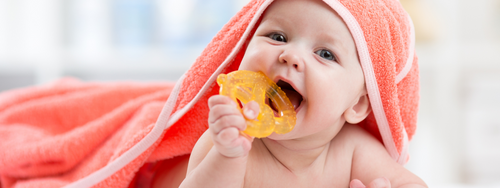Share:
In today’s eco-conscious and health-aware society, the choices we make for our babies reflect not only our love for them but also our concern for their future and the planet. Among the myriad of options available to parents, microfiber towels have become popular due to their softness, absorbency, and quick-drying properties. However, like any product that comes into close contact with our little ones, it's crucial to scrutinize their safety, environmental impact, and long-term cost implications. This article aims to shed light on the potential risks associated with using microfiber towels for babies, supported by scientific data, to empower parents to make informed decisions.
Understanding Microfiber Towels
Microfiber is a synthetic material, typically made from a blend of polyester and polyamide (nylon). Its fibers are incredibly thin, allowing for a lightweight, absorbent, and fast-drying fabric. These qualities make microfiber towels appealing for use with babies, who require gentle care and frequent cleaning.
The Risks Unveiled
Skin Sensitivity and Allergies:
The delicate skin of babies is more permeable and less resistant to bacteria and allergens compared to adult skin. Microfiber, being a synthetic material, can potentially harbor allergens or irritate sensitive skin. Research has indicated that prolonged exposure to synthetic fibers may exacerbate skin conditions such as eczema in infants.
Chemical Exposure:
During the production of microfiber towels, various chemicals are used to enhance certain properties such as color, absorbency, and texture. These chemicals, including dyes and softeners, could pose a risk to babies if they are not completely removed during the manufacturing process and end up being absorbed by the skin.
Microplastic Pollution:
One of the most concerning aspects of microfiber towels is their environmental impact. With each wash, microfibers shed from the towels, entering our water systems and contributing to the burgeoning problem of microplastic pollution. These microscopic plastic particles can make their way into the food chain, affecting not only marine life but potentially human health as well.
Long-Term Cost Implications:
While microfiber towels might seem cost-effective in the short term due to their durability and efficiency in cleaning, the long-term costs, particularly environmental cleanup and health implications, could outweigh these benefits. The cost of addressing the environmental damage caused by microplastics, including filtration systems for water treatment facilities and cleanup efforts, is significant.
Navigating the Choices
Given these risks, it is essential for parents to consider alternatives and take measures to mitigate the impact of using microfiber towels with their babies.
Choose Natural Fibers:
Opting for towels made from natural fibers like cotton, bamboo, or hemp can be a safer choice for your baby’s skin and the environment. These materials are renewable, biodegradable, and less likely to cause skin irritation or allergies.
Wash Wisely:
If you choose to use microfiber towels, washing them in a bag designed to catch microfibers can reduce the number of fibers that enter the water system. Additionally, washing them less frequently and at a lower temperature can minimize shedding.
Educate and Advocate:
Raising awareness about the impact of microfiber towels on the environment and public health can drive demand for safer, more sustainable alternatives. Supporting companies that prioritize eco-friendly and health-conscious practices can also make a difference.
Conclusion
The journey of parenting is filled with decisions that weigh on both the immediate well-being of our children and the long-term health of our planet. While microfiber towels offer convenience and efficiency, the potential risks to babies’ health and the environment are significant. By opting for natural alternatives and taking conscious steps to mitigate environmental impact, parents can protect not only their own children but also the world they will inherit. As we navigate these choices, let’s aspire to create a safer, cleaner, and more sustainable future for all.
References
To ensure the reliability of the information provided in this article, the following sources have been consulted:
- "The impact of microplastics on human health," Nature Reviews Microbiology.
- "Skin sensitivity in babies and young children," Journal of Pediatric Dermatology.
- "Environmental implications of microfiber pollution," Environmental Science & Technology.
- "The lifecycle assessment of various textile fibers," International Journal of Life Cycle Assessment.



